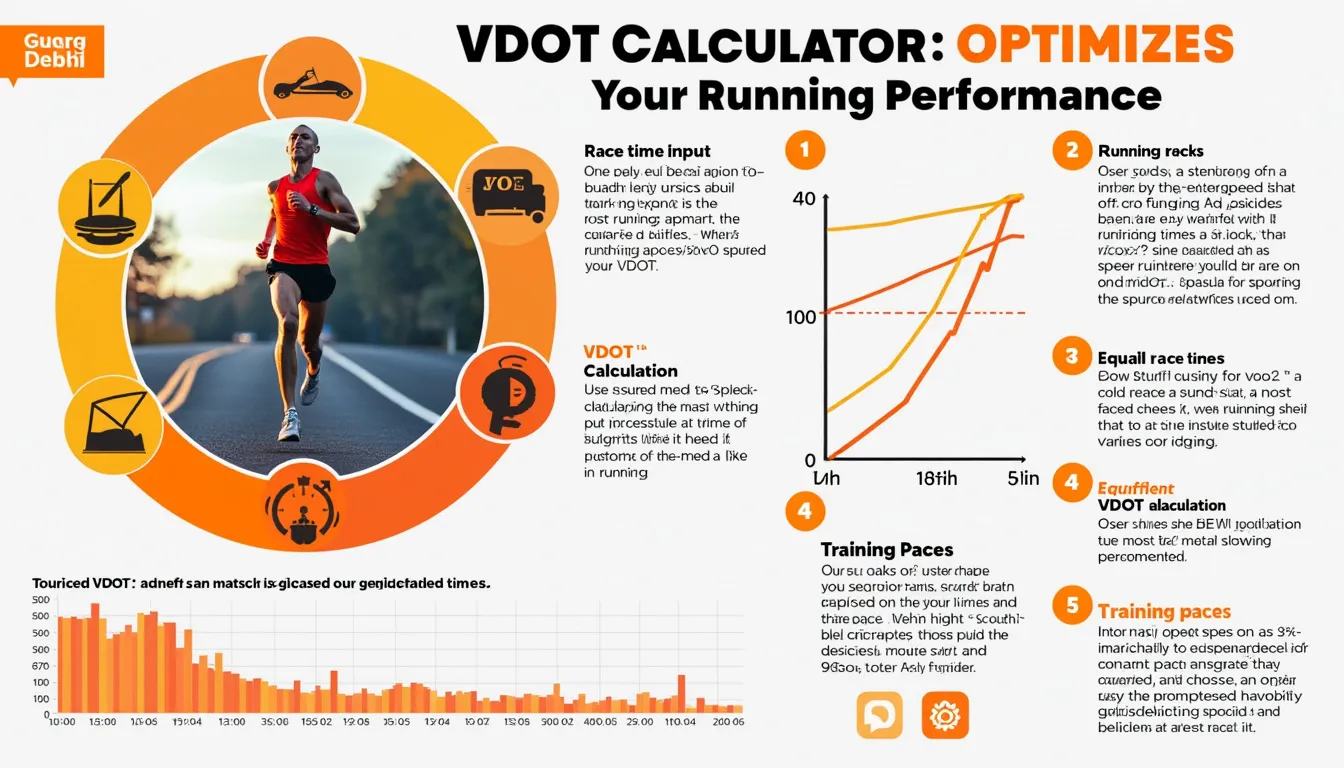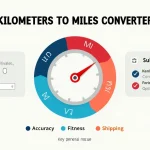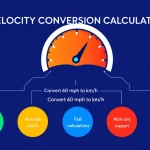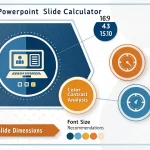VDOT Calculator
Is this tool helpful?
How to use the tool
- Pick your race distance. Type, for example, 3000 (m) or 21.0975 (km). Both differ from the preset 5000 m.
- Select the unit. Choose meters or kilometers so the calculator converts correctly.
- Enter finishing time.
- Example 1 – 3000 m: 0 h 11 min 45 s.
- Example 2 – Half-marathon: 1 h 38 min 20 s.
- Press “Calculate VDOT.” Your score appears with predicted race times and training paces.
- Apply the outputs. Use the paces for easy, threshold, interval and repetition workouts; use equivalent times to set realistic race goals.
Underlying formulas
Speed v (m·min-1) = rac{distance (m)}{time (min)}.
$$ \text{If } v \le 350:\; VDOT = -4.60 + 0.182258v + 0.000104v^2 $$
$$ \text{If } v > 350:\; VDOT = -4.60 + 0.2989558v $$
To predict time t for another distance d (m) at the same VDOT:
$$ v = \begin{cases} \frac{-(0.182258) + \sqrt{0.182258^2 – 4(0.000104)(-4.60-VDOT)}}{2(0.000104)}, & VDOT \le 75\\[4pt] rac{VDOT+4.60}{0.2989558}, & VDOT > 75 \end{cases} $$ $$ t = rac{d}{v} $$
Example 1 – 3000 m in 11:45
- v = rac{3000}{11.75} = 255.3 m·min-1
- VDOT = -4.60 + 0.182258·255.3 + 0.000104·255.3² ≈ 48.7
- Predicted 5 km time = rac{5000}{255.3} ≈ 19 min 36 s
- Easy-pace = 1000 / (255.3·0.75) ≈ 5:14 min·km-1
Example 2 – Half-marathon in 1:38:20
- v = rac{21097.5}{98.33} = 214.5 m·min-1
- VDOT ≈ 39.3
- Marathon-pace = 1000 / (214.5·0.84) ≈ 5:36 min·km-1
Quick-Facts
- VDOT scale: ~25 (novice) to 85 (world-class) (Daniels, 2013).
- Piece-wise VO2 formula breakpoint: 350 m·min-1 (Daniels & Gilbert, 1979).
- Easy runs target 65-79 % of vVO2max, reducing injury risk (ACSM, 2018).
- 5 km men’s WR average speed: 373 m·min-1 (World Athletics, 2023).
FAQ
What is VDOT?
VDOT is a velocity-based estimate of your aerobic capacity, expressed in mL · kg-1 · min-1, created by exercise scientist Jack Daniels (Daniels, 2013).
How accurate are the race predictions?
For evenly paced efforts under similar conditions, predictions fall within ±3 % of actual times (Daniels & Gilbert, 1979).
Why does the calculator switch formulas at 350 m·min-1?
Above 350 m·min-1 running economy improves linearly, so the quadratic term adds little value (Daniels & Gilbert, 1979).
How often should I update my VDOT?
Recalculate every 4-6 weeks or after a performance benchmark to keep training paces current (ACSM, 2018).
Can trail runners use VDOT?
Yes—compute sea-level VDOT then adjust paces by terrain or altitude conversion tables (USATF Altitude Adjustment Calculator, 2020).
What training paces follow each VDOT?
The tool outputs five zones: Easy (0.75·v), Marathon (0.84·v), Threshold (0.88·v), Interval (0.95·v), Repetition (1.05·v) (Daniels, 2013).
Is VDOT suitable for beginners?
Beginner scores guide safe intensity and show progress; “start where you are, not where you wish” (Daniels, 2013).
Does body mass affect the score?
VDOT is already mass-specific, so weight changes affect speed but not the underlying oxygen-cost conversion (NIH, 2020).
Important Disclaimer
The calculations, results, and content provided by our tools are not guaranteed to be accurate, complete, or reliable. Users are responsible for verifying and interpreting the results. Our content and tools may contain errors, biases, or inconsistencies. Do not enter personal data, sensitive information, or personally identifiable information in our web forms or tools. Such data entry violates our terms of service and may result in unauthorized disclosure to third parties. We reserve the right to save inputs and outputs from our tools for the purposes of error debugging, bias identification, and performance improvement. External companies providing AI models used in our tools may also save and process data in accordance with their own policies. By using our tools, you consent to this data collection and processing. We reserve the right to limit the usage of our tools based on current usability factors.







